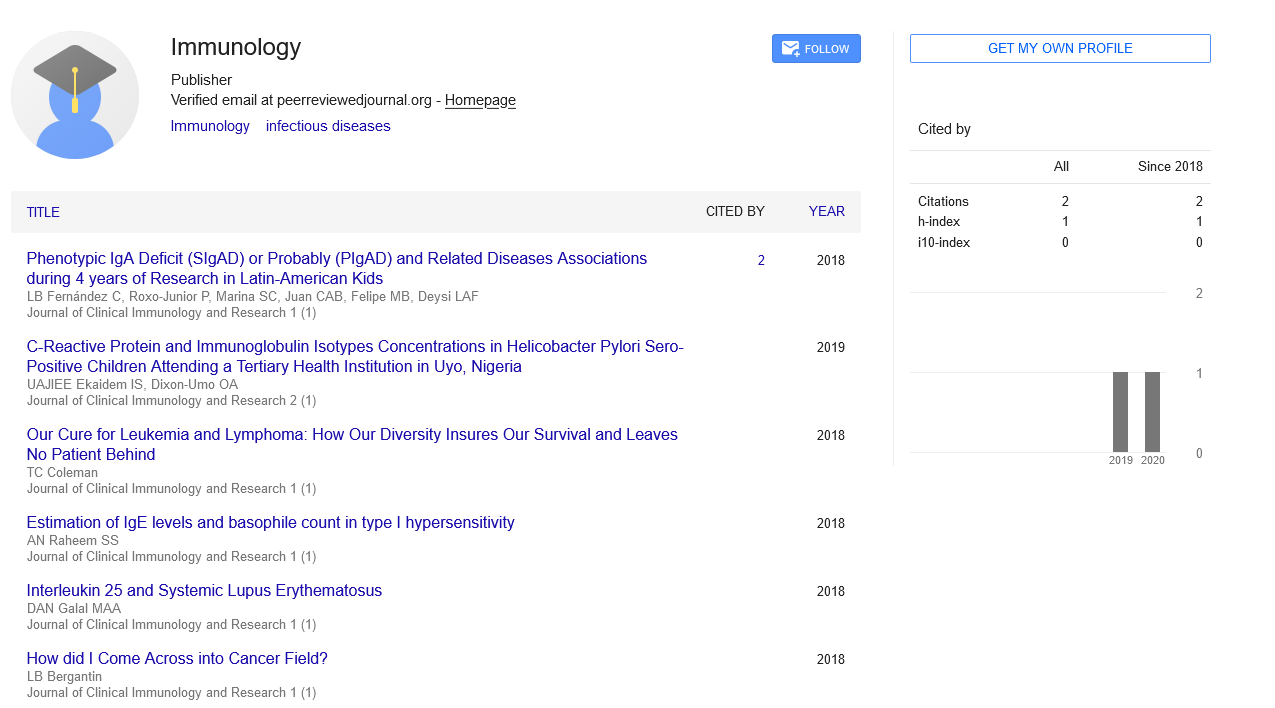Toward a new kind of vaccine: A logical extension of the symmetrical immune network theory
George Hoffmann
Network Immunology Inc, Canada, University of British Columbia
: J Clin Immunol Res
Abstract
Background: The symmetrical immune network theory, developed in 1975, is based on the existence of specific T cell factors and hypothesizes that normal IgG immune responses comprise the production of 2 kinds of antibodies, namely antigen-specific antibodies and antiidiotypic antibodies.
Objective: The aim of this study was to confirm the existence of specific T cells factors and to show that immunization of C3H mice with BL/6 skin or using nominal antigen for immunization (Tetanus Toxoid) induced production of antigen-specific (anti-BL/6 or antitetanus) antibodies plus anti-idiotypic antibodies (C3H anti-anti-C3H). Subsequently, we investigated the role of combinations of antigen-specific and anti-idiotype antibodies in a variety of animal models of clinical diseases.
Methods: Antigen-specific antibodies were produced by conventional immunization of mice (eg, with tetanus toxoid or by skin allografting). Subsequent anti-idiotypic antibodies were derived by exhaustive absorption of antigen-specific antibody, with confirmation of antiidiotypic specificity by binding to relevant target antigenspecific antibodies in an enzyme-linked immunosorbent assay (ELISA). Antigen-specific plus anti-idiotypic antibodies were then used to modulate skin allograft survival, dextran sulfate sodium (DSS)-induced colitis, ovalbumin (OVA)- induced IgE production, and breast cancer growth in mice.
Results: Infusions of anti-BL/6 antibodies together with BL/6 anti-anti-BL/6 antibodies specifically suppressed (>85%) an immune response to BL/6 lymphocytes in C3H mice. The two kinds of antibodies with complementary specificity are hypothesized to stimulate 2 populations of T lymphocytes. Coselection of these 2 populations leads to a new stable steady state of the system with diminished reactivity to BL/6 tissue. A combination of anti-C3H and C3H anti-anti-C3H IgG antibodies down-regulated inflammation in a mouse model of inflammatory bowel disease (>75%) and attenuated anti-IgE production and sensitization to produce IL4 cytokines (>70%) in an OVAallergy model. Combination of C3H anti-BL/6 and BL/6 anti-anti-BL/6 antibodies decreased tumor growth and metastases (>705) in an EMT6 transplantable breast cancer model.
Conclusions: Use of a combination of antigen-specific and anti-idiotypic antibodies has potential as a new class of vaccines.
Biography
George Hoffmann is entirely dedicated to Network Immunology’s systems approach to treating disease and optimizing health. Realizing the immense untapped value in the network approach to understanding immuno-regulation, Hoffmann co-founded Network Immunology with Chief Scientist, Dr. Geoffrey W. Hoffmann in 2003. In 2007, Hoffmann was appointed Manager of Business Development. In 2009, at a key juncture in the Company’s history, he was appointed President and CEO. Since then he has been a major driver behind the Company’s development and expansion.
E-mail: george.hoffmann@gmail.com
 Spanish
Spanish  Chinese
Chinese  Russian
Russian  German
German  French
French  Japanese
Japanese  Portuguese
Portuguese  Hindi
Hindi 